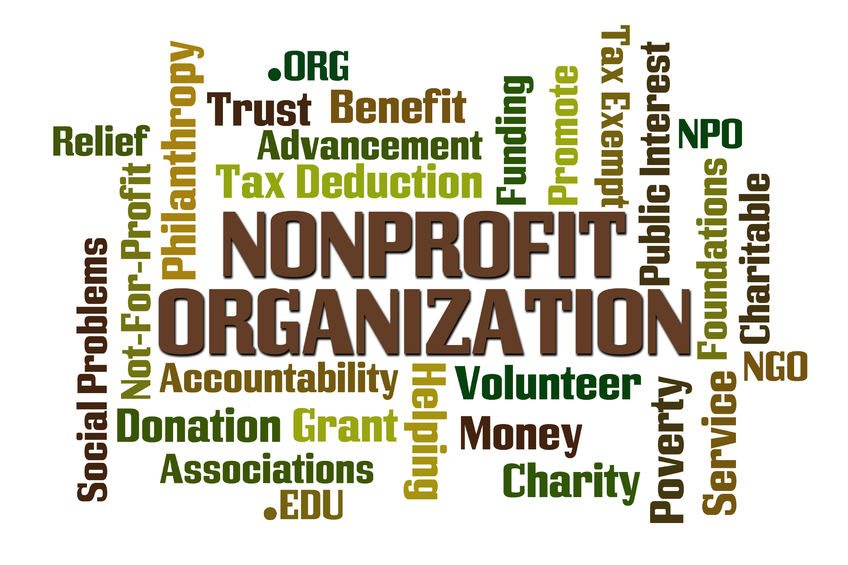Just How a Nonprofit Firm Can Help You Maximize Your Organization's Reach
Just How a Nonprofit Firm Can Help You Maximize Your Organization's Reach
Blog Article
Checking Out the Diverse Features and Duties of a Nonprofit Company in Addressing Social Issues and Encouraging Change
Not-for-profit firms function as critical agents of change within society, tackling a myriad of social problems via multifaceted techniques. Their duties extend past plain service provision; they take part in campaigning for, source mobilization, and community outreach, commonly acting as a bridge between essential services and marginalized populations. By fostering partnerships and employing culturally relevant approaches, these organizations deal with the origin of social challenges. Yet, the intricacies of their roles increase vital questions about efficiency and sustainability. What are the implications of these diverse features on long-lasting area influence?
Recognizing Nonprofit Company Duties
The effectiveness of not-for-profit agencies depends upon a clear understanding of their varied roles within society. These companies offer as essential middlemans in between the public, exclusive, and governmental sectors, dealing with various social problems and advocating for change. Not-for-profit companies typically work as provider, delivering crucial programs and sources to underserved populaces. This role is crucial in filling up spaces that may exist in civil services, making sure that at risk groups have accessibility to essential assistance.
In addition, nonprofits play an important duty in advocacy, elevating awareness and affecting plan decisions that influence their areas. By involving in research study and public education, these companies aid shape public discussion and promote educated decision-making - nonprofit agency. They also function as systems for volunteerism, mobilizing community members to add their time and skills towards cumulative objectives
Furthermore, not-for-profit firms typically work as conveners, combining diverse stakeholders to cultivate collaboration and collective effect. This joint technique boosts their ability to address complicated social concerns efficiently. Understanding these complex roles is critical for taking full advantage of the potential of not-for-profit agencies in developing sustainable social change and enhancing overall neighborhood well-being.
Area Involvement and Outreach
Efficient community involvement and outreach are basic elements of nonprofit agencies' strategies to develop and promote links depend on within the communities they offer. These initiatives focus on understanding community requirements, advertising understanding of available resources, and encouraging engagement in programs created to address social concerns. Not-for-profit companies employ a selection of techniques to involve with neighborhood members, such as workshops, informative sessions, and joint occasions.
Outreach efforts serve to strengthen partnerships with varied populations, particularly marginalized groups who may deal with obstacles to accessibility. By utilizing culturally relevant interaction techniques and leveraging regional partnerships, nonprofits can enhance their exposure and demonstrate their commitment to area empowerment. This technique not just grows a feeling of belonging however additionally raises the possibility of continual interaction.
In addition, reliable neighborhood interaction exceeds mere involvement; it entails actively paying attention to area participants' responses and integrating their insights into program growth. This collaborative process ensures that the solutions supplied are receptive, pertinent, and customized to the distinct difficulties faced by the area. Eventually, fostering solid connections via involvement and outreach can cause even more impactful treatments and a greater cumulative effort toward advertising favorable social change.
Campaigning For and Plan Influence
Campaigning for acts as a vital system for not-for-profit firms to affect public policy and drive systemic adjustment. By leveraging their experience and neighborhood understandings, these organizations can effectively represent marginalized populations and address pushing social problems. Nonprofits take part in campaigning for through numerous strategies, consisting of public recognition article campaigns, grassroots mobilization, coalition structure, and direct lobbying of policymakers.
With these initiatives, not-for-profit agencies aim to form legislation and policy frameworks that straighten with their mission and the needs of pop over here the neighborhoods they serve. They perform research, collect data, and share compelling stories to highlight the urgency of specific issues, making sure that decision-makers are informed and motivated to act. This procedure not only magnifies the voices of those affected by social injustices but likewise cultivates a more fair and inclusive policymaking atmosphere.
Moreover, campaigning for initiatives frequently look for to create long-term architectural adjustments, attending to origin as opposed to just easing symptoms. By prioritizing policy impact, nonprofit agencies add to a more comprehensive understanding of social obstacles and promote remedies that can bring about sustainable improvements in societal health. Eventually, advocacy is basic to the transformative role nonprofits play in developing a just and fair society.
Fundraising and Resource Management
Not-for-profit agencies count on robust fundraising and resource management techniques to support their campaigning for initiatives and maintain their missions. Reliable fundraising is important for guaranteeing the availability of funds needed to apply programs and activities that deal with pushing social problems. This process frequently includes expanding income streams via gives, specific donations, business sponsorships, and fundraising occasions. By using a multi-faceted method, nonprofits can reduce the threats linked with dependence on a solitary financing resource.
Source administration is equally essential, as it involves the strategic appropriation of both financial and human resources to make best use of effect. Nonprofits have to create budgets that align with their goals while making sure transparency and accountability to stakeholders. This involves routine surveillance of expenditures and readjusting strategies as required to maximize resource use.

Collaboration and Collaborations
While numerous companies pursue their goals independently, partnership and collaborations can dramatically boost the effectiveness of nonprofit companies. By functioning with each other with other nonprofits, government entities, and private industry companies, nonprofits can merge resources, share knowledge, and enhance their influence on social concerns. Joint initiatives commonly cause ingenious remedies that may not be possible independently, leveraging the staminas of each partner to attend to complex difficulties.

Eventually, reliable cooperation needs clear interaction, shared goals, and common regard amongst partners. By welcoming a cooperative method, not-for-profit firms can develop sustainable networks that not just address immediate social concerns but additionally add to lasting systemic change, fostering a more fair culture. With collaboration, nonprofits can thrive and maximize their possibility for significant influence.
Final Thought
Not-for-profit firms offer as critical entities in attending to social concerns and promoting modification within neighborhoods. With diverse features such as area engagement, resource, and campaigning for monitoring, these organizations successfully activate sources and assistance for underserved populations. Their collaborative efforts with various stakeholders improve the capability to influence public law and advertise architectural changes. Eventually, the diverse duties of not-for-profit firms dramatically add to the search of social justice and the improvement of community health.
Comprehending these diverse roles is important for making best use of the potential of not-for-profit firms in developing lasting social modification and enhancing overall community well-being.
Effective community engagement and outreach are basic elements of nonprofit firms' strategies to foster connections and develop trust fund within the areas they serve. By functioning with each other with other nonprofits, government entities, and exclusive field organizations, nonprofits can pool resources, share competence, and intensify their influence on social concerns.Not-for-profit agencies offer as essential entities in resolving social problems and cultivating modification within communities - nonprofit agency. Eventually, the diverse roles of not-for-profit agencies dramatically add to the search of social justice and the improvement of community well-being
Report this page